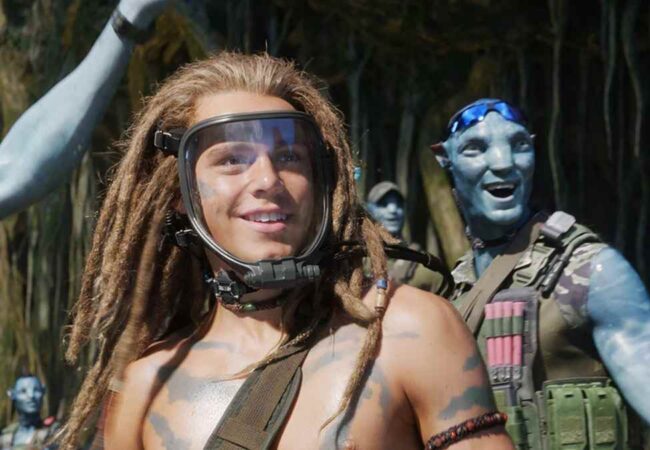Visual effects (VFX) and computer-generated imagery (CGI) play important roles in the entertainment industry, particularly in the realm of film and television, with the goal of providing audiences with experiences that are fascinating and immersive. Despite the fact that these terms are frequently used interchangeably, they refer to separate procedures that, when combined, contribute to the production’s overall visual appeal. Learning the distinctions between computer-generated imagery (CGI) and visual effects (VFX) can provide useful insights into the magic that happens behind the scenes of our favorite movies and television shows.
What Is Computer Generated Imagery Or CGI?
Computer-generated imagery, more commonly known as CGI, is the process of creating digital visual elements through the use of computer graphics. It incorporates a wide variety of processes, such as animation, texturing, rendering, and modeling in three dimensions (3D). In most cases, computer-generated imagery (CGI) is utilized to create entire scenes, characters, or things that cannot be filmed in real life because doing so would be impractical, unsafe, or impossible. It gives directors the ability to create virtual worlds, monsters, and special effects that can mix in perfectly with live-action footage.
What Is VFX?
In motion pictures, television shows, commercials, and other types of media productions, the term “visual effects” (often abbreviated as “VFX”) refers to the process of manipulating and improving filmed footage or the development of wholly computer-generated imagery (sometimes abbreviated as “CGI”) to obtain the required visual elements. During the post-production stage of a film, it involves the use of a variety of techniques, tools, and software to create effects that are either realistic or fanciful. These effects improve the overall visual aesthetics of the project as well as its storytelling. The actual method of filmmaking may make it difficult or impossible to capture some aspects of a scene, such as certain items, creatures, environments, explosions, fire, water, or weather effects. Visual effects may entail adding or eliminating these features after the fact. VFX artists make use of both their technical abilities and their creative know-how to ensure that the final product is cohesive and visually attractive by integrating these visual effects into the live-action film in a way that is seamless.
What Are The Differences Between VFX And CGI? Are They Even Related?
Computer-generated imagery (CGI) refers to the process of creating images using a computer from scratch, whereas visual effects (VFX) entail the combination of live-action and computer-generated elements in order to enhance or modify film. Even though computer-generated imagery (CGI) is a subcategory of visual effects (VFX), CGI is not a must for all VFX. The term “visual effects” refers to a wider variety of approaches, some of which include miniatures, practical effects, and any other approach that improves upon or manipulates the video that was filmed.
The term “visual effects,” refers to the process of altering or improving filmed video through the application of a variety of post-production techniques. It covers a wider range of visual additions and adjustments, some of which can be accomplished with computer-generated imagery (CGI). Visual effects artists use various tools and programs to merge computer-generated images with live-action film or to change material that already exists in order to produce visual effects that are believable and captivating. Compositing, color grading, motion tracking, matte painting, rotoscoping, and other techniques can all be included in visual effects.
A superhero film is a good example that highlights the distinction between computer-generated imagery and visual effects. In a movie like this, computer-generated imagery (CGI) is frequently employed to create characters that are larger than life, intricate set pieces, and magnificent action sequences that would be hard to produce physically. Post-production is when visual effects (VFX) come into play. This is when artists improve the video by adding explosions, muzzle flashes, wire removal, and other effects to make the scenes more engaging and visually appealing.
It is essential to acknowledge that both computer-generated imagery (CGI) and visual effects (VFX) are highly collaborative procedures. The vision of the filmmaker is brought to life through the collaborative efforts of teams consisting of experienced artists, animators, modelers, and technicians. They work closely with the cinematographer and the other members of the team to ensure that the visual effects are integrated naturally with the live-action material and that they contribute to the narrative.
The realm of computer-generated imagery and visual effects (CGI and VFX) has been revolutionized by advances in technology, which has enabled filmmakers to produce visuals that are more realistic and immersive. Artists are now able to produce intricate settings and figures that are so lifelike that the border between truth and imagination is blurred. This is made possible by the use of powerful computers and smart software. However, it is essential to keep in mind that the success of computer-generated imagery (CGI) and visual effects (VFX) still depends on the originality, expertise, and creative sensibilities of the people working behind the scenes.
Final Words:
To summarize, computer-generated imagery (CGI) and visual effects (VFX) are two independent but interrelated components of visual narrative in film and television. CGI stands for computer-generated imagery, which refers to the process of creating digital materials from scratch, while VFX refers to the process of manipulating and improving recorded footage through the use of a variety of post-production techniques. Together, they contribute to the incredible sights that mesmerize audiences and carry them away to fantastic worlds that are beyond the realm of reality.











